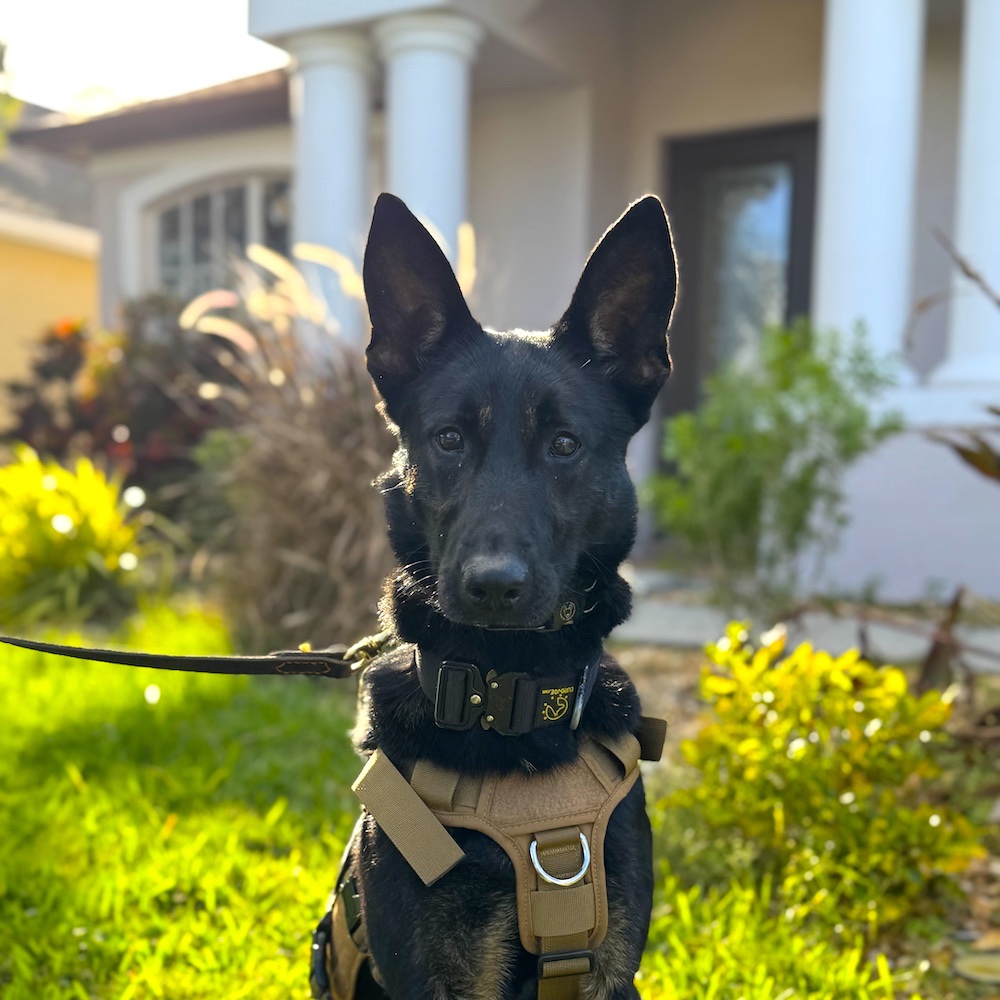Do you need a mold detection dog to visit your home or property?
This article will help you decide whether you might need or could benefit from a mold detection dog like ours.
To begin, mold growth of all types and sizes can be physically problematic and mold should be removed and remediated from a home. That’s a fact. But, do you need a mold detection dog specifically?
Should there be ‘a dog on every job?’
Not necessarily. It certainly wouldn’t hurt to have one, but plenty of mold remediation companies deliver quality results without one.
So when and why would you actually need a mold dog?
First, Why a Dog to Begin With?
Specialist-trained dogs are used to detect drugs, bombs, and even certain medical conditions, guide the blind, herd, hunt, and provide security.
They’ve also been used to detect mold for more than 25 years, in Europe for most of that time, and for several years so far in the U.S.
Why a dog?
It comes down to their senses and their intelligence.
A dog’s sense of smell for example is an estimated 100,000 times more powerful than a human’s. For our 40 million olfactory receptors, dogs have roughly 2 billion olfactory receptors.
They can also be trained to perform specific tasks—like those above—especially well and often far better than humans. A musty or moldy house can be smelled by an astute human observer, but the same person would be unlikely to be able to tell you exactly where the mold problem is brewing, especially since most bad mold problems are out of sight, hidden behind drywall, or under carpeting or floorboards.
That’s where a dog does so much better. A trained mold detection dog will literally walk you right to the source of a mold problem, even if that source is behind a wall. That’s what 100,000X the smelling power does for a dog. They literally sniff the mold out.
(And if you’re curious whether this is safe for the dog, the answer is yes, as long as the dog’s handler is also trained. Mold Detection Dogs, like Aspen our K9, spend most of their lives far away from sources of mold. When Aspen points us in the right direction, we take over, and she’s moved on to an area of the house that’s safe for her. So, too much mold can also be bad for pets and even for a mold detection dog, and the key is to be sure they spend as little time as possible in actual contact with or in the vicinity of mold.)
Not Always Needed, But Always a Bonus
Mold detection dogs aren’t needed on every mold inspection or mold remediation job, but there are parts of both jobs where they are always beneficial. They save time and resources by being so much better than humans and other test types in determining the exact source of mold.
Most mold testing will tell you whether you have mold, what type of mold it is, and what room it’s likely in. But beyond that, a mold remediation professional will still have to narrow down exactly where the mold is, and what’s causing it.
Mold detection dogs sort of take out that middle step, by telling you where the mold is, so you can find out what caused it, and get rid of it to improve your home and often health.
Most water damage mitigation and mold remediation companies don’t use mold dogs not because they’re not valuable or accurate, but because they simply don’t have a detection dog to begin with.
Mold dogs are expensive to train and to properly care for. But, they’re worth it.
That said, here’s where Mold Detection K9s or Mold Dogs are going to be most helpful:
1. When mold growth is hidden somewhere unknown.
The worst of common mold problems often occur behind walls, under floors, or above ceiling tiles, where it’s not immediately visible. By the time the signs of these mold problems start showing themselves—musty smell, spotty walls, discolored patches—the mold growth is usually widespread and problematic. A mold dog can pinpoint the exact area of concern without unnecessary demolition.
2. When large or complex homes are affected by mold.
In homes with multiple floors, crawlspaces, attics, or complicated layouts, a mold dog can quickly scan the environment, saving time compared to visual inspection or air sampling alone. Many of the most accurate mold tests are done on a room-by-room basis, so a mold dog saves time and money by walking straight to the problem, essentially “inspecting” multiple rooms of a house at a time—and much faster than a lab would take to decipher air samples and other tests.
3. When early detection is needed.
Dogs can detect mold at very early stages, sometimes before it’s visible or before spore counts are high enough to show up clearly in air samples.
4. When mold is (or once was) in a specific and known location
Instead of taking random air/surface samples, the dog’s alerts can guide inspectors to the most relevant areas, making lab testing more accurate and cost-effective. Our mold dog, Aspen, will tell us where mold is, but if you’d then want to know exactly what type of mold it is, other testing can be done. And testing is usually helpful, because while our mold remediation team has seen and dealt with 30-40 different types of mold, we’re not legally or scientifically able to declare something is mold without testing being done—no mold remediator can, legally speaking. That’s one reason the EPA simply suggests removing and remediating any mold that’s found, rather than doing any mold testing in the first place. In their eyes, the type of mold doesn’t matter, and all mold should simply be removed. But there are many people, ourselves included, who find that mold testing is highly beneficial, especially in certain rental or leasing scenarios, potential legal or insurance cases, and health conditions, or when occupants are particularly susceptible to mold.
5. To verify mold remediation was thorough and done right.
After professional mold remediation, a mold dog can help confirm that no hidden mold colonies remain, especially in concealed areas.
6. If you have specific health concerns.
For homeowners with mold allergies, asthma, or compromised immune systems, a mold dog can provide an additional degree of peace of mind by helping ensuring all hidden mold sources are identified.
7. If you’re particularly susceptible to mold growth.
Though mold in high enough concentrations is bad for every human being, not every body reacts the same way to different amounts or mold, or to different types of mold. Because certain people are so susceptible to and adversely affected by mold, they’re usually also highly trained and experienced in mold as a subject—after all, it affects them so greatly. We’ve found that for these individuals, a mold dog is a great addition to a standard mold remediation job, whether in detecting mold problem spots or in ensuring that ALL of the problematic mold was located and remediated.
8. When musty odors are persistent.
If a musty smell lingers but inspections and air tests are inconclusive, a mold dog can help determine whether mold is the cause (versus other odor sources like VOCs).
Limitations to Keep in Mind
Mold dogs are best used in combination with human inspection and testing, and not always as a standalone solution.
If we compare mold dogs to other types of specialist canines—drug or bomb detection dogs for example—we can see that these dogs are incredible, but are also best supported by human handlers that know what both they and their dogs are doing and looking for.
Mold detection dogs can’t determine the type of mold or the mold or mycotoxin spore concentrations in a room, and for that mold testing is still needed. But, they’ll certainly help isolate where testing would be most productive.
Aspen, Tampa Bay’s Beloved Mold Detection Dog
If you live in Tampa Bay and feel you or your home fits into any of the criteria above, or believe that a mold detection dog would help you find hidden mold problems at home or give you greater peace of mind, please reach out to us.
That’s why we invested in Aspen, our one-of-a-kind Belgian Malinois/German Shepherd mix and K9 mold detection expert.
We love our investment. She’s family now.
And we hope she can help your family, too.







